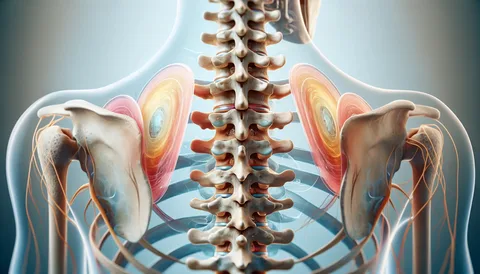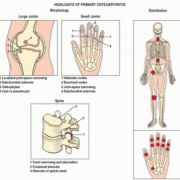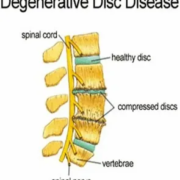Things to Avoid with Degenerative Disc Disease: A Guide to Protecting Your Spine
Things to Avoid with Degenerative Disc Disease. A Guide to Protecting Your Spine is a common spinal condition where the intervertebral discs lose hydration, elasticity, and height over time, resulting in pain, limited mobility, and, in some cases, nerve impingement. Though it’s called a “disease,” DDD is not a disease in the traditional sense—it’s part of the natural aging process. However, certain lifestyle habits and activities can accelerate its progression or trigger painful flare-ups.
This article explores the most important things to avoid with degenerative disc disease, helping patients manage pain, preserve function, and maintain spinal health for the long term.

Understanding Degenerative Disc Disease
Things to Avoid with Degenerative Disc Disease. Intervertebral discs act as shock absorbers between vertebrae, enabling flexibility and cushioning. With age or injury, these discs can dry out, crack, or collapse. As a result, vertebrae may rub together, or nerves may become compressed, leading to:
- Chronic neck or lower back pain
- Numbness, tingling, or weakness in the limbs
- Stiffness or reduced mobility
- Pain with prolonged sitting, bending, or twisting
While DDD cannot be reversed, lifestyle modifications can significantly reduce symptoms and prevent deterioration.
Top 10 Things to Avoid with Degenerative Disc Disease
Poor Posture
Slouching, hunching over devices, or improper alignment while sitting, standing, or sleeping places excess pressure on spinal discs.
Why it’s harmful: Poor posture strains the spine, compressing already damaged discs and increasing pain.
What to do instead:
- Use ergonomic chairs with lumbar support
- Keep screens at eye level
- Practice “neutral spine” alignment
- Sleep with a supportive pillow and mattress
Prolonged Sitting
Extended sitting, especially in unsupportive chairs, compresses spinal discs and weakens core muscles.
Why it’s harmful: Sitting increases intradiscal pressure, especially in the lower back.
What to do instead:
- Stand up and stretch every 30–60 minutes
- Use a standing desk when possible
- Incorporate gentle movement throughout the day
Heavy Lifting (or Lifting with Poor Form)
Lifting heavy objects with improper technique is one of the leading causes of disc injury and pain flares.
Why it’s harmful: Bending at the waist or twisting while lifting stresses discs and can lead to herniation or worsening degeneration.
What to do instead:
- Bend at the knees, not the waist
- Keep the object close to your body
- Avoid twisting while carrying weight
- Use lifting aids or ask for help
High-Impact Activities
Repetitive jarring movements or sudden impacts increase wear and tear on the discs.
Activities to avoid:
- Running on hard surfaces
- Jumping or bouncing exercises (e.g., box jumps)
- Contact sports (football, martial arts)
Low-impact alternatives:
- Swimming
- Walking on soft surfaces
- Stationary biking
- Yoga or Pilates with spine-safe modifications
Smoking
Nicotine restricts blood flow and reduces the delivery of oxygen and nutrients to spinal discs.
Why it’s harmful: Smoking accelerates disc dehydration and degeneration, increasing the risk of chronic pain.
What to do instead:
- Seek smoking cessation support (counseling, medications)
- Adopt a heart-healthy lifestyle to improve circulation
Excess Body Weight
Carrying excess weight, especially around the midsection, increases spinal load and compresses discs.
Why it’s harmful: Extra pressure on vertebrae can speed up disc deterioration and cause misalignment.
What to do instead:
- Adopt a balanced, anti-inflammatory diet
- Engage in regular low-impact exercise
- Set gradual weight-loss goals with your physician’s guidance
Ignoring Core Strength
Avoiding core exercises due to fear of pain can backfire, as a weak core leads to spinal instability.
Why it’s harmful: Core muscles support and stabilize the spine. Weakness shifts more stress to the discs.
What to do instead:
- Incorporate gentle core exercises:
- Pelvic tilts
- Bridges
- Bird-dogs
- Planks (modified if needed)
- Avoid crunches or sit-ups that flex the spine excessively
Stress and Sleep Deprivation
Stress and poor sleep contribute to increased pain perception, muscle tension, and reduced healing capacity.
Why it’s harmful:
- Stress triggers inflammation and tightens muscles
- Lack of sleep interferes with tissue repair and energy
What to do instead:
- Practice stress-reduction techniques (deep breathing, meditation)
- Establish a consistent bedtime routine
- Create a sleep-friendly environment (dark, quiet, cool)
Stomach Sleeping
Sleeping on your stomach hyperextends the spine, especially the neck and lower back.
Why it’s harmful: This position flattens the natural spinal curve and increases disc pressure.
What to do instead:
- Sleep on your side with a pillow between your knees
- Or sleep on your back with a pillow under your knees
- Use a supportive, medium-firm mattress
Ignoring Symptoms or Skipping Medical Care
Avoiding evaluation or treatment can allow minor degeneration to progress to more serious spinal conditions.
Why it’s harmful: Delayed care may lead to nerve compression, spinal stenosis, or disability.
What to do instead:
- See a spine specialist for persistent pain
- Follow up on imaging (MRI, X-rays) if recommended
- Stick with physical therapy or exercise programs tailored to your needs
Bonus Tips: What You SHOULD Do
In addition to avoiding harmful habits, proactive management of degenerative joint disease icd 10 can slow progression and improve quality of life:
Stay Active
Movement nourishes discs and strengthens supporting muscles. Avoid complete bed rest unless advised for short-term flare-ups.
Hydrate
Discs are composed largely of water. Staying well-hydrated helps maintain disc height and flexibility.
Eat an Anti-Inflammatory Diet
Choose foods rich in:
- Omega-3 fatty acids (salmon, flaxseeds)
- Leafy greens
- Berries
- Turmeric and ginger
Avoid processed foods, added sugars, and trans fats.
Follow a Physical Therapy Program
A tailored program can include:
- Stretching exercises
- Core stabilization
- Postural retraining
- Manual therapy
Final Thoughts
Things to Avoid with Degenerative Disc Disease can be a chronic and frustrating condition, but with smart lifestyle choices and awareness of triggers, you can minimize pain and maintain mobility. Avoiding specific activities and habits—such as poor posture, smoking, high-impact sports, and lifting improperly—goes a long way in protecting your spine.
Working closely with your doctor, physical therapist, or spine specialist will help you navigate the condition safely and improve your overall spine health.
Summary Table: What to Avoid with DDD
| ❌ Avoid | ✅ Why | ✅ Alternative |
|---|---|---|
| Poor posture | Increases disc pressure | Practice spinal alignment |
| Prolonged sitting | Weakens core, compresses discs | Take movement breaks |
| Heavy lifting | Strains spine | Use correct technique |
| Smoking | Reduces disc nutrition | Quit with support |
| High-impact sports | Aggravate degeneration | Switch to low-impact exercise |
| Weak core | Destabilizes spine | Safe core strengthening |
| Stomach sleeping | Misaligns spine | Sleep on back/side |
| Excess weight | Adds spinal load | Healthy eating & exercise |





Leave a Reply
Want to join the discussion?Feel free to contribute!